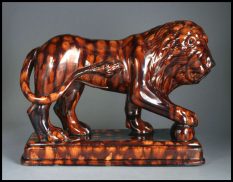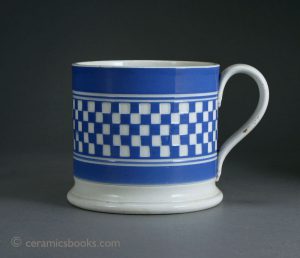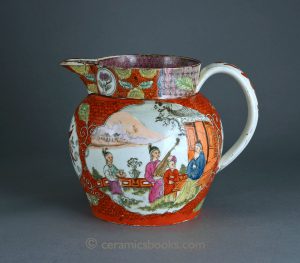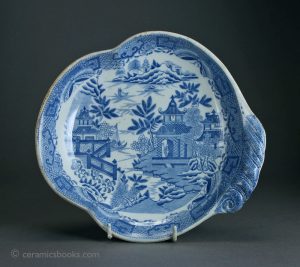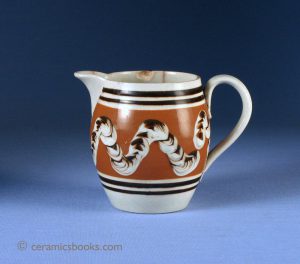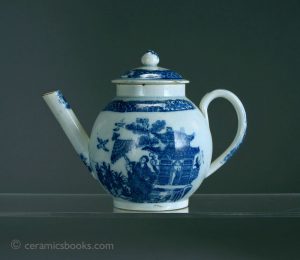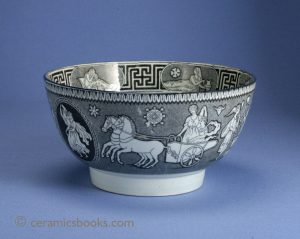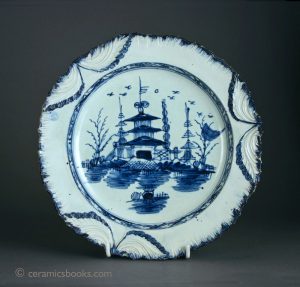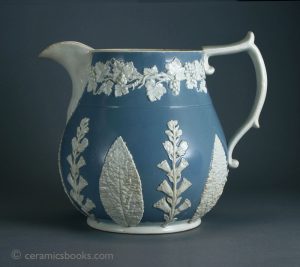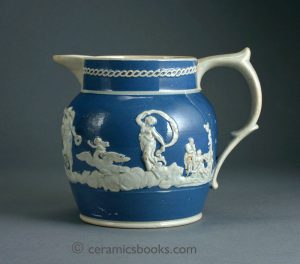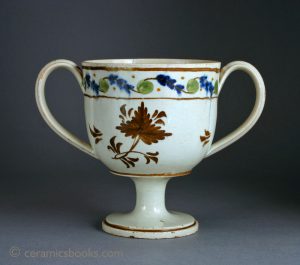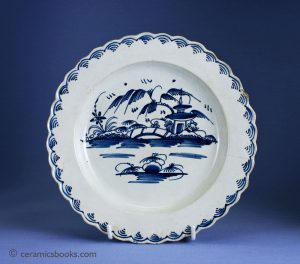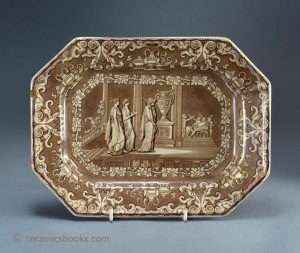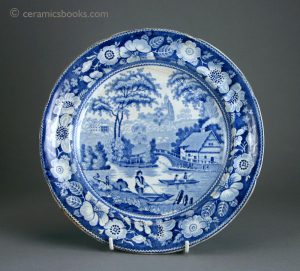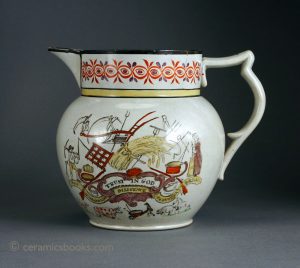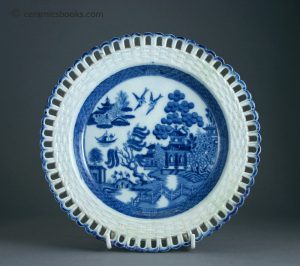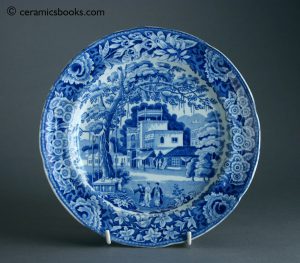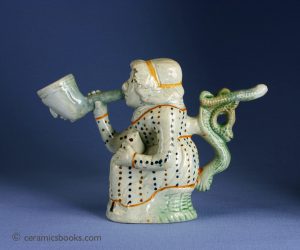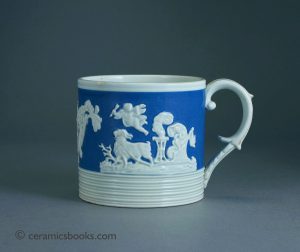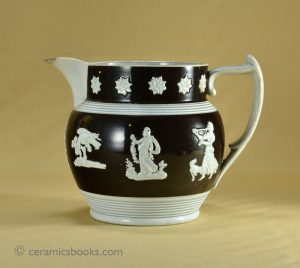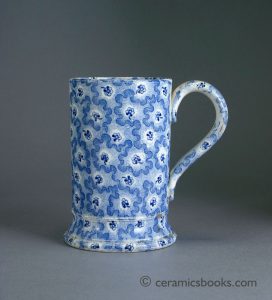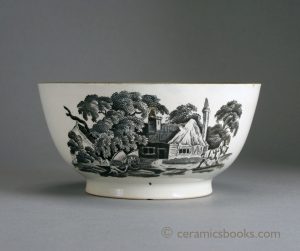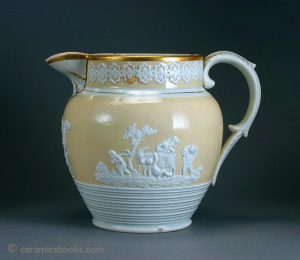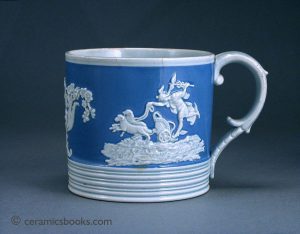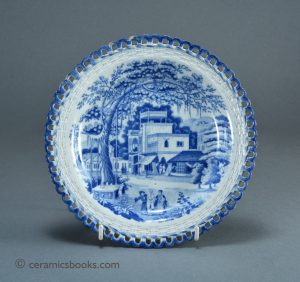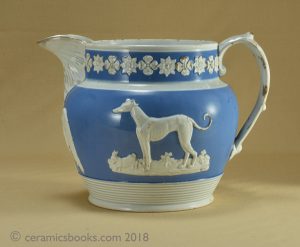Pearlware
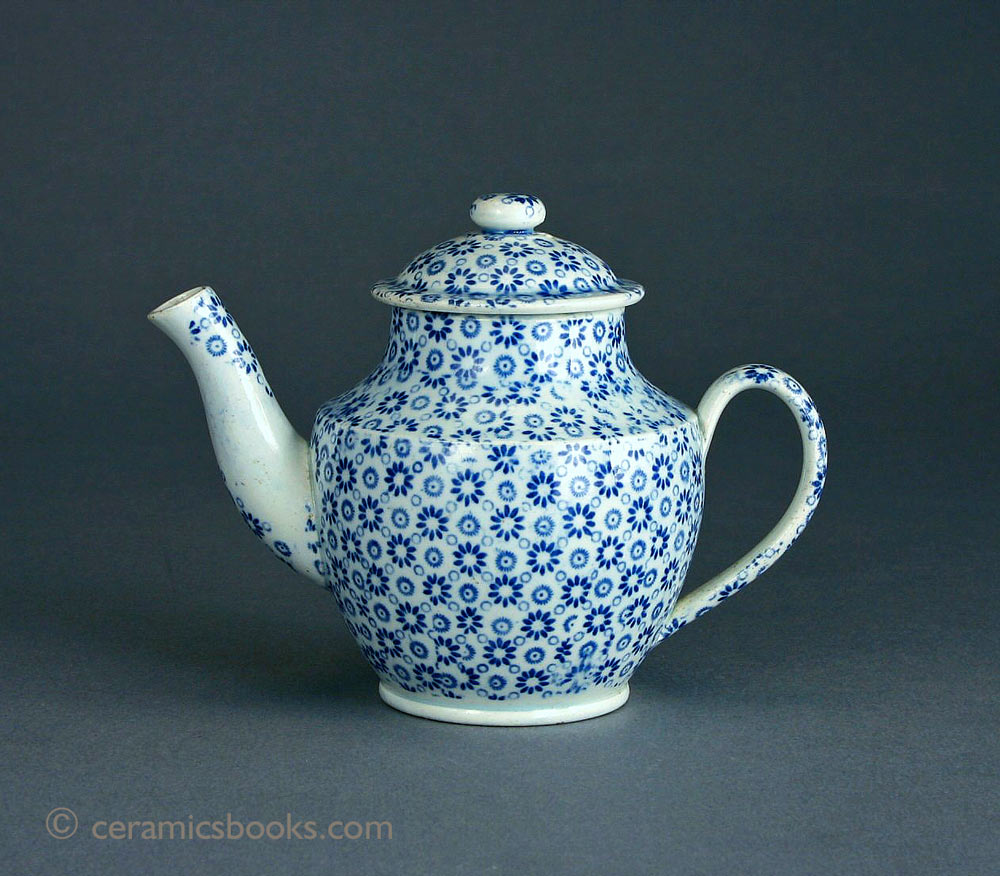
Pearlware describes white earthenware which has been whitened further by the addition of flint and white china clay within the body. It is usually glazed with a clear lead glaze which contains a tiny addition of cobalt oxide so that a distinct blue tinge can be seen where the glaze pools.
Although a similar ware was developed in Staffordshire possibly as early as the 1740s, it was Wedgwood who perfected it and named it as Pearlware in 1779. Many potteries produced pearlware, often with blue under-
The fresh brightness of pearlware meant that it quickly superceded the older and slightly yellow creamwares.
There are a number of other wares which use a pearlware body combined with other decoration. These include Prattware (which uses high temperature under-glaze oxide colours), as well as industrial slipwares such as mochaware and banded ware etc.
